(Upload on June 9 2025) [ 日本語 | English ]
Mount Usu / Sarobetsu post-mined peatland
From left: Crater basin in 1986 and 2006. Cottongrass / Daylily
HOME > Lecture catalog / Research summary > Glossary > Disaster prevention
A natural disaster strikes
|
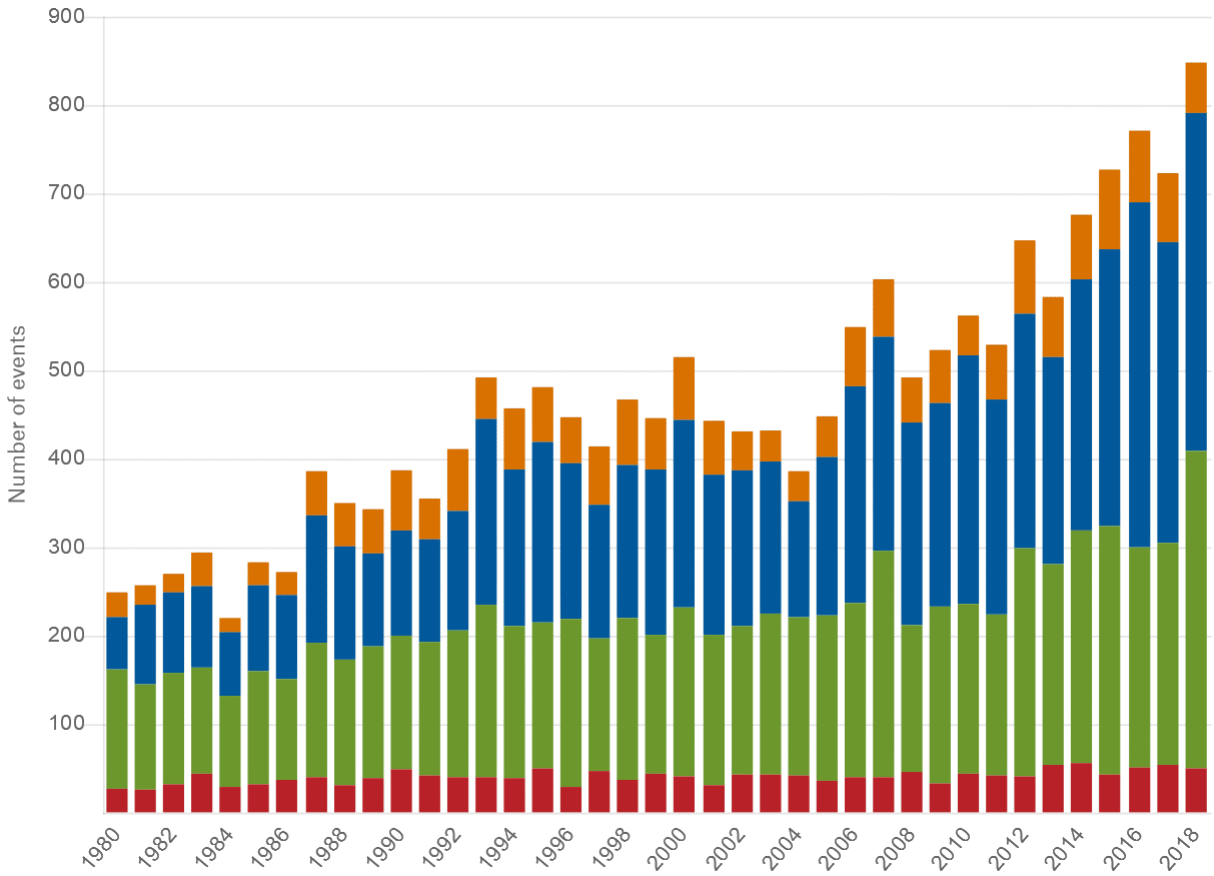 Natural loss events worldwide 1980-2018 Disaster science (災害科学)examines the influence of catastrophic events on natural and built environments in an interdisciplinary context that maintains that "disasters" occur only in populated areasPrevention
|
|
Table. Eruptions during the recent 200 years in the world, related to disaster prevention. V: volcanic explosivity index (VEI)
volcano
year
fatality
V
remarks |
Erosion control work in O-wakuzawa (大涌沢) Owakuzawa (Owakudani) is an explosion crater created by a large-scale phreatic explosion about 3000 years ago. The crater still discharges fumarolic gas containing poisonous hydrogen suflide and sulfur dioxide. The bedrock in the area is very fragile due to this fumarolic activity having caused numerous landslides in the past. In 1910 there was an extensive landslide by heavy rain, sediment runoff attacking the banks of Hayakawa River causing a major disaster with many casualties. This side of the mountain continues to have frequent landslide. To prevent further landslide disasters, Kanagawa prefectural government has been undertaking contingency planning including erosion-control works and lining of mountainsides with stones, boring and anchoring work.
Owakuzawa (Owakudani) is an explosion crater created by a large-scale phreatic explosion about 3000 years ago. The crater still discharges fumarolic gas containing poisonous hydrogen suflide and sulfur dioxide. The bedrock in the area is very fragile due to this fumarolic activity having caused numerous landslides in the past. In 1910 there was an extensive landslide by heavy rain, sediment runoff attacking the banks of Hayakawa River causing a major disaster with many casualties. This side of the mountain continues to have frequent landslide. To prevent further landslide disasters, Kanagawa prefectural government has been undertaking contingency planning including erosion-control works and lining of mountainsides with stones, boring and anchoring work.[ geopark ] |
Peak ground acceleration, PGA (表面最大加速度)= design basis earthquake ground motion, DBEGMmeasure of earthquake acceleration on the ground Unit: gal, cm/s² Earthquake intensity (震度)The systems are different among countries or regionsSeismometer (地震計): a device to measure seismic waves, i.e, earthquakes Ex. torsion seismometer (= Wood-Anderson seismometer, WATS) |
2003/12/26 Iran 2005/10/08 Pakistan 2009/09/29 Samoa earthquqke and tsunami: 192 killed 2008/05/12 Sichuan earthquake: 87587 killed 2016/04/16 Ecuadro earthquake: 676 killed 2018/09/06 Hokkaido Eastern Iburi earthquake (胆振東部地震) at 3:08 6.6 MW (35.0 km deep) - I did not wake up ... Liquefaction (液状化現象)Def. fault (断層)Earthquake ruptures (地表地震断層) = surface ruptures, surface fault break or surface faulting |
|
= seismic sea wave, mostly derived from earthquake in sea (not weather disasters)
most tsunami are induced by earthquake, in particular, in Japan 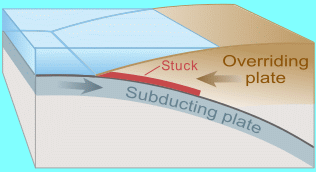 1 1
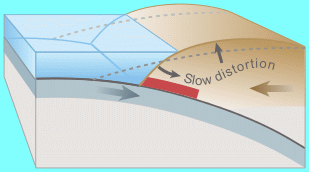 2 2 3 3
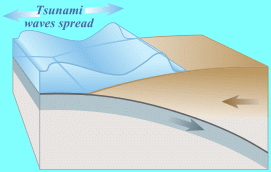 4 4
|
2004/12/26 2004 Indian Ocean earthquake and tsunami
Moment magnitude 8.8 (or ≥ 9.0) |
[ meteorology ]
|
Def. disaster caused by extreme or hazardous weather conditions
→ leading to significant damage, disruption, or loss of life |
| ☛ relationship between snow depth and Sasa | 2008/05/02 cyclone Nargis: struck Myanmar and killed 138,366 persons (including feared dead) |
|
Def. catastrophic event where an excess of water submerges land, causing severe damage to infrastructure, disrupting communities and often leading to loss of life
classified by intensity, duration and impact — whether it is from heavy rainfall, river overflow, storm surges or even dam failures |
Types of floodsEx. flash floods, coastal floods, urban floods or river floods
each with distinct causes and effects |
|
Classification of slope Types of soil erosiongully erosionrill erosion sheet erosion (surface soil movement) Mudflow (泥流)Example: |
Universal soil loss equation (USLE)
Stream power indexTopographic wetness indexCurvatureplanform or plan curvatureprofile curvature |
 Tetrahedron relationships between scientist, politician, mass media, and general people |
Eco-DRR (生態系を活用した防災・減災)= Ecosystem-based disaster risk reductionIf the sustainable management, conservation and restoration of ecosystems can reduce disaster risk ⇒ to prevent and reduce disasters by utilizing ecosystems + to maintain ecosystem services |
Studies on the basic and applicapable knolwedge on erosion control to prevent or reduce disasters
to prevent ground(-surface) movements on terrestrial regions from any disasters
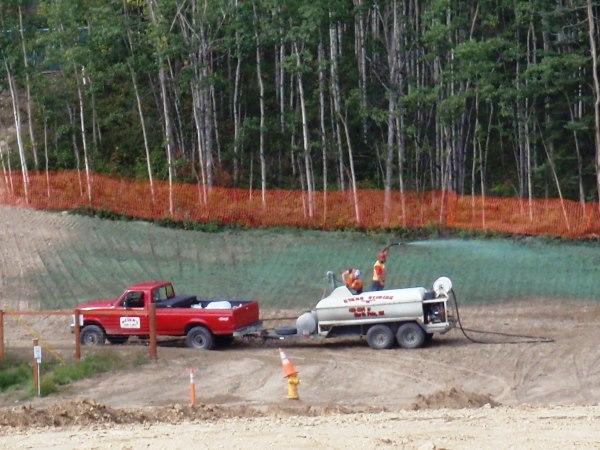 1
1
 2
2
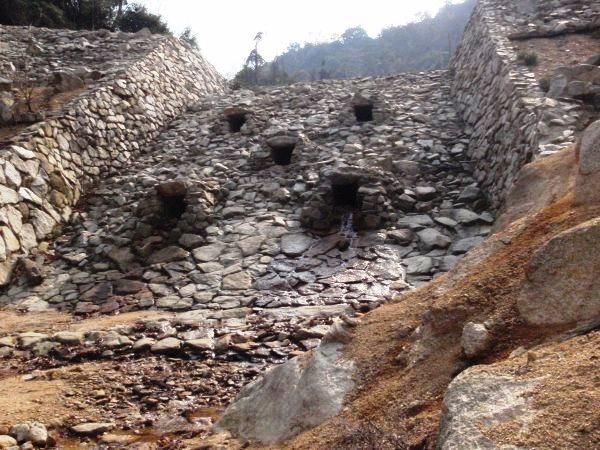 3
3
[1] seeding conducted on a slope at UAF campus, Fairbanks, on August 16 2013. [2] a debris flow induced by Typhoon 14 on a slope of Miyajima Island, western Honshu, occurred on September 6 2005. [3] an erosion control dam constructed at the downstream of the debris flow shown in #2. The photos were taken on March 16 2014.
A well developed vegetation cover influences the intensity of hillslope processes in variety of ways, not only through indirectly controlling the size of the surface forces, but also through adding to the shear strength of the soil mantle.
Two components of the vegetation cover need to be consider:
Prevension of soil erosionGrasses and forbs, and to a lesser extent woody vegetation, prevent surficial erosion on moutnain slopes by processes of:
Prevension of mass movementVegetation, primarily woody plants, helps to prevent mass-movement, particularly shallow sliding in slopes. Possible ways woody vegetation might affect the balance of forces in a slope include:
• the fourth, surcharge, may have either a beneficial or adverse impact depending on soil or slope conditions. • the last two, wind throwing and root wedging, on the other hand, are likely to affect slope stability adversely. Strong winds blowing parallel to the ground surface will exert an overturning movement on trees. This can lead to so called wind throwing or blowdowns which result in localized disturbances in the soil mantle. 1. Root reinforcementThe most obvious way in which woody vegetation stabilizes slopes is by root reinforcement. The intermingle roots of plants tend to bind the soil together in a monothilic mass. On slopes, the vertical root system (ie. the main taproot and secondary sinker roots) can penetrate through the soil mantle into strata below (eg. fractured or disintegrated bedrock), thus anchoring the soil to the slope and increasing resistance to sliding.It is important to appreciate that the significance of mechanical stabilisation of slopes by tree roots depends primarily on the depth of the potential slip surfaces, the likely failure mode and the steepness of the slope. A general classification scheme for forested soil slopes involves four conditions:
• A root- or fiber-reinforced soil behaves as a composite material in which elastic fibers of relatively high tensile strength are embedded in a matrix of relatively plastic soil. • Additional strength is mobilized within the composite material by the development of tractive forces between the particles and the surrounding matrix. • In other words, shear stresses in the soil mobilize tensile resistance in the fibre, which in turn imparts greater strength to the soil. • In the case of direct shearing of soil masses permeated by roots, most of the roots will develop tension. At the time of failure, roots within the failure zone may break due to tension, be sheared, or be pulled out. Where the roots extend below the shear surface they are likely to be finer and hence may also be broken or pulled out. 2. Soil moisture modificationTrees can increase slope stability by intercepting rainfall that would otherwise have infiltrated, and by extracting soil moisture for transpiration. Both processes enhance shear strength by reducing positive pore-water pressure and encouraging the development of matric suction.Canopy interception and stemflow tends to concentrate rainfall locally around the stem of plants, creating higher local pore-water pressures, while root development and associated biological activity creates macropores that increase infiltration capacity and concentrate flow deeper into the bank. These effects are most pronounced during and immediately after large rainfall events of the type that are often associated with slope failure. Vegetation can affect the stability of slopes by modifying the hydrologic regime of the soil. Trees transpire water through their leaves and this in turn depletes soil moisture. A forest can also intercept and adsorb moisture in the crowns of trees or in the ground litter. Interception and transpiration by trees in a forest would thus tend to maintain drier soils and mitigate or delay the onset of water logged or saturated conditions in the soil. Landslides and other catastrophic mass wasting events in mountain slopes are generally correlated with high precipitation and storm activity. The influence of precipitation on both creep movement and landslide occurrence derives from its relation to groundwater movement and soil moisture stress. The higher or the more prolonged the periods of elevated moisture stress in a slope, the higher will be the creep or accumulated creep movement |
A forest cover accelerates soil mositure depletion in a shallow soil mantle regardless of the steepness of the slope. For a simulated storm of a given intensity and duration, the recharge phase for the bare or denuded sope was therefore much shorter than for the forested one.
• therefore the first year after cutting is likely to be the most critical as far as soil moisture and its effects on slope stability are concerned. Insights into the influence of tree cover on the soil moisture regime and hence on slope stability are provided by the results of a soil moisture monitrring study conducted in a forested site that was subsequently clear cut.• indicate that the forest cover has little effect on the soil moisture regime once precipitation of sufficient duration and intensity falls on the slope and eliminates soil moisture suction. • Tree cover does not appear to have much influence on the probability of catastrophic sliding during intense storms. On the other hand, the soil moisture suction is definitely lower during the drier season of the year and accordingly creep movement and its destabilizing influence could extend over al longer period if vegetation removal results in substantially decreased soil moisiture tension or suction over a large part of the year. 3. Buttressing and archingButtressing and soil arching action by trunks of trees growing in slopes can also play an important role in slope stability. Buttressing or lateral restraint against shallow slope movement is provide by firmly anchored rigid tree trunks.Tree trunks and their associated vertical root cylinders behave as potential abutments of soil arches which form upslope of the tree Arching in soil occurs when soil attempts to move through and around a row of trees firmly embedded or anchored in an unyielding layer. Under the right conditions the trees behave as cantilever piles and as the abutments of "soil arches" that form in the ground upslope of the trees. 4.SurchargeTree surcharge is an estimate of the tree mass (biomass) that adds additional load to the failure surfaceSurcharge from the weight of trees is widely believe to have an adverse influence on the stability of slopes. This view is not generally correct; it is only true in special cases. In some instances surcharge can actually improve stability. In general, surcharge caused by the weight of trees will not be uniform or very high (except perhaps immediately beneath a tree). • As an example consider the weight of Douglas fir trees growing on slopes of experimental watersheds in the Cascade range, Oregon. Mechantable volumes of timber in these watersheds average 50,000 to 65,000 board ft/acres. • When the weight of the trees is spread out over the entire slope, the surcharge is only 12-15 psf. On the other hand the surface loading stress under an individual trees is 1400 psf. • If the tree are assumed to distribute their weight over a circular area of 75 sq. ft and are spaces approximately 30 ft apart - this surface loading stress (1440 psf) will produce a stress increase varying from 20 to 75 psf midway between trees at depths of 5 and 20 ft respectively. • Thus, the influence of surcharge from the weight of trees on either creep rates or safety factors in long slopes is not likely to be very significant one way or another. 5. Root wedgingRoot wedging refers to the tendency for tree roots to penetrate a soil or rock mass along cracks, fissures and channels thereby loosening and prying it apart likewise.Root wedging is alleged to have contributed to slope failures, but evidence for this effect is scant and unconvincing. An equally good case can be made for the beneficial influence of roots in tying slopes together and mitigating failure. In any event, judging by the preponderance of evidence from published field and laboratory studies, the beneficial effects of root systems far outweigh any possible adverse effects. 6. WindthrowingWind throwing is likely to affect slope stability adversely. Strong winds blowing parallel to the ground surface exert an overturning movement on trees.The effects of strong winds on trees range from loss of foliage and branches to small gap formation to partial or complete overstory blowdown. The heavy precipitation that tends to accompany storm systems saturates soils, reduces root adhesion, and increases the weight of tree crowns and thus makes trees more susceptible to damage. A more common phenomenon is the uprooting or overturning of individual trees during high winds. When a tree with roots extending into mineral soil is uprooted by wind, a large mass of soil and rock is lifted with the roots thus producing a pit. As the fallen tree decays, the uprooted soil, roots, and stem settle to form a mound. The mound is leeward of the pit in the direction of the tree fall. If it were assumed that wind generated shear stresses acted directly downslope and that the affected a significant portion of the slope at a given instant, a significant destabilizing force could theoretically be imposed on a vegetated slope. These symptoms are rarely met, however. Nevertheless, wind through its effect on uprooting or swaying of trees may trigger soil mass movement on steep slopes. Uprooting of trees contributes to movement downslope of the soil and rock mantle and may initiate local gully type erosion. Swanston (1967) found that the majority of debris avalanches on shallow, colluvial soils occurred on timbered slopes and originated in areas of windthrown trees. Erosion and landslide risk at downhill ski sites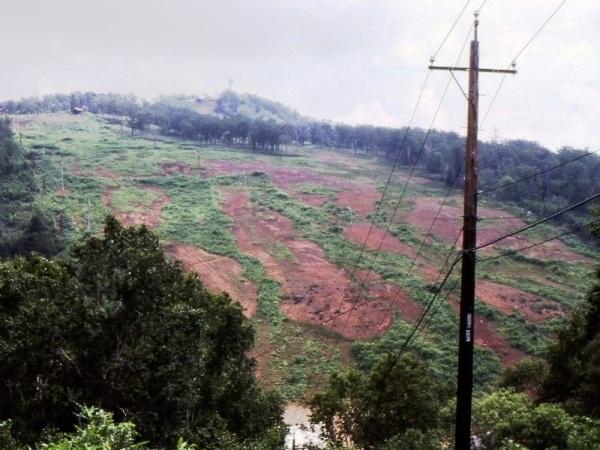 The modification of mountain slopes, particularly deforestation and the disturbance of the soil cover and the soil profile, was very common in the earliest development of ski runs. Negative effects on the environment were usually neglected. However, the effects were rather severe especially in higher areas, where natural restoration is restricted by the extreme climatic situation and constrained
conditions for vegetation and re-growth.
The modification of mountain slopes, particularly deforestation and the disturbance of the soil cover and the soil profile, was very common in the earliest development of ski runs. Negative effects on the environment were usually neglected. However, the effects were rather severe especially in higher areas, where natural restoration is restricted by the extreme climatic situation and constrained
conditions for vegetation and re-growth.Nevertheless, as the demand for skiing and attractive skiing facilities increases, there are continuing impacts caused by new skiing facilities that require attention and management of ski slopes.
|